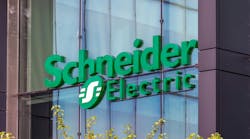Latest from Industry
Some of the largest utility rebate programs in the nation are once again loaded with rebates and other financial incentives to help end users with their lighting retrofits, and the long-term trend for lighting rebates looks like they will increase over the years.
The “State of the Efficiency Program Industry” study published by the Consortium for Energy Efficiency, Boston, said that from 2007 to 2011, the electric program budgets of North American electric utilities increased more than 150%, from $2.7 billion in 2007 to $6.8 billion in 2011. A study by Green Tech Media, “Enterprise LED 2012: Commercial and Industrial Market Trends, Opportunities and Leading Companies,” said these budgets are expected to reach $12.4 billion by 2020.
Some of the budget numbers are mind-boggling. For instance, one of the larger programs in the country, the New Jersey Smart Buildings New Construction and Retrofits initiative that covers Atlantic City Electric, Jersey Central Power & Light, Rockland Electric Company, New Jersey Natural Gas, Elizabethtown Gas, PSE&G, and South Jersey Gas, has $57.3 million budgeted for retrofits from Jan. 2012 to June 2013, and $5.5 million for new construction for the same period, as well as additional funding through several related programs.
New York’s Con Ed has always been a big spender on energy programs designed to help its nonresidential customers cut down on their use of electricity, and in May 2011 the budget for the utility’s Commercial and Industrial Energy Efficiency program was approved up to $25 million a year for four years with the goal of attaining 100 MW of permanent load reduction.
Ameren Illinois has a budget of $18 billion for its Lighting Rebates for Business program from June 1, 2012 to May 31, 2013, and across the Mississippi River in Missouri, Ameren Missouri announced last year that it will invest $147 million in energy-efficiency programs over the next three years, a move that it says make its portfolio of energy efficiency programs the largest in the state's history.
The Ameren Illinois program also offers a full slate of aggressive financial incentives for lighting retrofits, including up to $0.40 per watt reduced for some fluorescent lamp and ballast replacements and a maximum incentive cap of $200,000 paid at 100% and a 50% incentive for retrofits of $200,000 to $600,000. Ameren Illinois also recently began selling the 60W Phillips LED lamp directly to eligible business customers for $10, instead of the current retail price of $49.95. Business customers may purchase up to 10 LED bulbs through the company’s ActOnEnergy program, which was developed through a partnership with Philips Lighting. This is the same 60W Philips LED that won the U.S. Energy Department L-Prize for its 25,000-hour rated average life that’s equal to 10 years of service at eight hours per day and its soft, warm white light and dimmability down to 10 percent of its full level.
As in the past, the most common rebates for nonresidential applications are for the retrofit of existing fluorescent fixtures with the latest T5 and T8 fluorescent lamps and electronic ballasts; incentives for the installation of HID lighting and CFLs for high-bay installations; the installation of LED exit signs; and the use of occupancy sensors and other lighting controls. But you now see rebates for LEDs as part of a utility’s standard incentive programs, rather than in their custom incentive programs that may require additional verification from utility personnel before they will approve a rebate. For instance, California’s Pacific Gas & Electric now offers straight rebates for the use of LEDs in existing surface, pendant, track and recessed downlight fixture of between $14 to $25, depending on the wattage of the existing lamps being replaced.
It’s not unusual for electrical distributors, energy service companies (ESCOs) and other electrical professionals to score big with one of these utility programs. For instance, US Lamp Inc., Green Bay, Wis., a lighting distributor specializing in high-efficiency lighting solutions, recently announced that it was awarded a $300,000 grant through Wisconsin Public Service (WPS). A press release announcing the award said, “This grant was awarded to US Lamp for the 2013 calendar year to promote energy conservation lighting improvements for WPS electric customers. These customers are defined as retail and small- to medium-size industrial, including food manufacturing.
“These monies are used to target, promote and develop high-efficiency lighting solutions and controls for these WPS retail and industrial customers. These monies can be utilized as enhanced incentives — in addition to Focus on Energy incentives — for marketing development and to engineer lighting solutions for specific applications.” Focus on Energy is Wisconsin utilities’ statewide program for energy efficiency and renewable energy.
The best resource for updated information on rebate programs and other local, state and federal incentives as well as financing opportunities for renewable energy systems and electric vehicles continues to be the Database of State Incentives for Renewables & Efficiency (DSIRE) at www.dsireusa.org. According to information on that web-site, DSIRE is an ongoing project of the North Carolina Solar Center and the Interstate Renewable Energy Council (IREC) Inc. that’s funded by the U.S. Department of Energy’s Office of Energy Efficiency and Renewable Energy (EERE).








